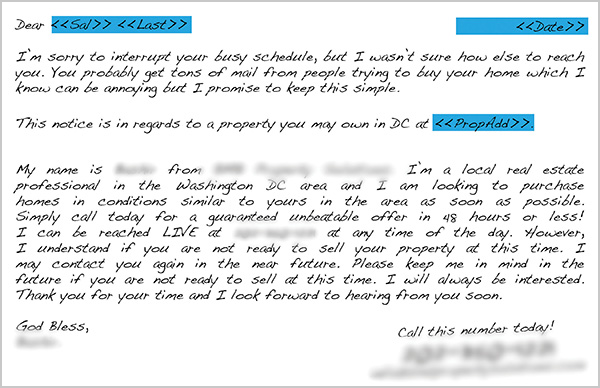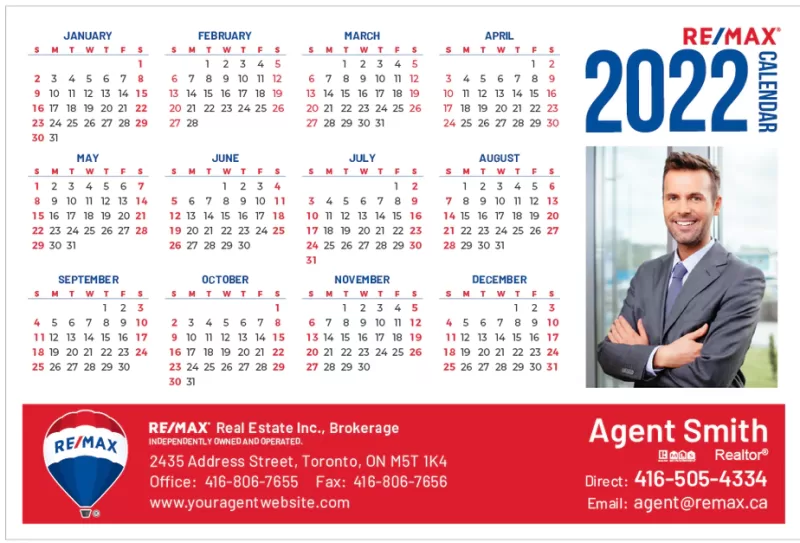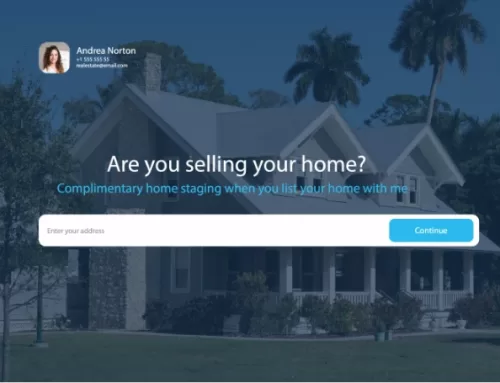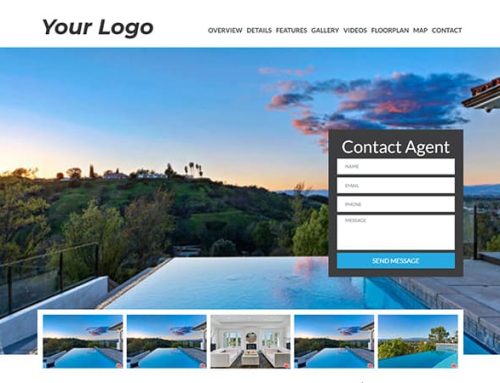Nowadays, direct mail marketing is considered an old-fashioned and dying market, but the opposite is the truth.
According to a recent study, direct mail accounts for the largest portion of the US local advertising spend, $38.5 billion, more than any local advertising channel.
Millions of marketers worldwide use direct mail marketing to sell services & products in all industries, from real estate to cable tv, and it’s still a proven marketing technique.
Nonetheless, the direct mail industry evolved and adopted several techniques and technologies from the digital marketing industry.
So before you decide if direct mail marketing for real estate is the right choice for you, here’s a comprehensive guide that will cover everything you need to know.
Table of Contents
What is direct mail marketing for real estate?
Direct mail is a marketing technique where print material is physically delivered to the target client’s mailbox via mail delivery service, usually the national postal service.
Real estate direct mail usually sends postcards, flyers, brochures, and other print materials.
It can be delivered to an entire geographical area, such as every door direct mail or a pre-defined list of mailboxes, also known as a “mailing list”.
What are the material types?
Designed letter
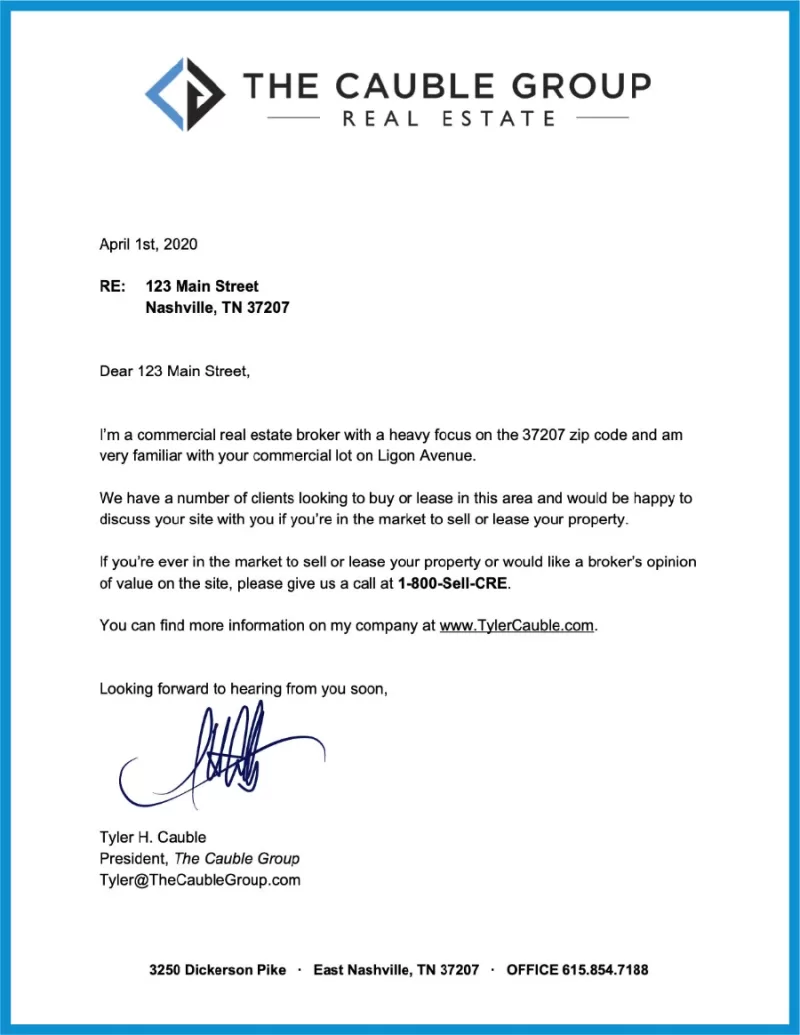
(Credit: CaubleGroup)
Designed letters are professional letters printed in a printer and include the agency logo and a photo of the property and the agent.
This option can be a bit more expensive than a postcard because it must be folded into the envelope, and the labor costs will be reflected in the final cost.
Handwritten letter
(Credit: thinkrealty.com)
Handwritten letters are, as they sound, letters that were written by hand. If you want to go old-school, it can be powerful as well.
Actually, it doesn’t have to be handwritten. Some printers can make a printed letter look like it’s been written by hand, and mailing houses provide that service.
Postcard

Postcards are the most cost-effective form of direct mail material: they are cheaper to print and mail, and you will also save on postage costs.
The price can vary depending on the material size, the method of printing, and some other additions such as glossy papers.
8 reasons to use direct mail marketing for real estate
Build yourself as a local expert
When it comes to real estate, different areas need different qualities. A realtor in Los Angeles is different from a realtor from Chicago.
Buying or selling a house is a big decision, and people want to work with a local expert who knows the market’s upsides and downsides. They want someone who knows all the details about the locality, and the small details make the difference.
They hope you can use this knowledge to maximize their results.
Direct mail can help you easily reach the local audience and establish yourself as a local expert.
The ability to target the right audience
When you market, you want to spend less and get more results. One way to do it is by targeting the audience that is more likely to take action.
Modern platforms nowadays offer you the ability to target by demographic criteria such as household income, age, and type of ownership.
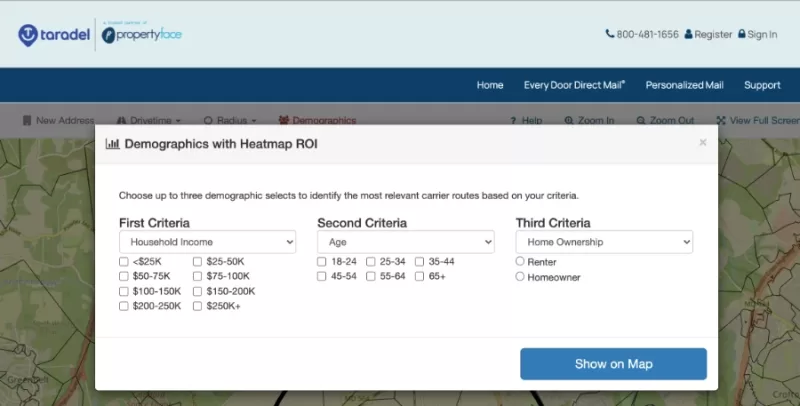
If you know your buyer persona and your audience, direct mail can help you reach them.
Automation to scale
Direct mail marketing is considered a traditional marketing technique. But modern direct mail is no longer falling behind the technology.
Nowadays, many companies offer you the option to automate it, schedule in advance, and target customers the same way the online platforms can.
Automation is a crucial factor if you want to scale. You no longer need to invest your time and effort in related tasks such as creating the material, printing, and mailing the campaign yourself, and it’s all taken care of.
All you need to do is choose the local area, the demographics, and the time. You can even build your email list according to your characteristics.
So if you want to scale, direct mail marketing for real estate is an excellent option.
Local social proof
Social proof is the king of marketing, especially in real estate. It drives people to take action when they know someone else. We, as humans, tend to follow others.
When potential clients see you had success in the past, they assume you can also do it in the future.
Real estate marketing is about selling a vision, and the closer the story characteristics will be to your potential customers’ lives, the easier it will be for them to imagine. And if they can imagine, they are more likely to take action.
Direct mail has the highest response rate
Marketing is about reaching the right audience and getting a response back or generating leads.
A study by DataTargetingSolutions shows that the direct mail response rate is 5-9 times higher than any other advertising channel – a 42% response rate.
So if you want to generate more leads and get better conversion rates, direct mail marketing in real estate is a no-brainer.
Build long term relationships
According to the 2021 NAR report, 68% of sellers found their agents through a referral. In addition, the average American moves 11 times in their lifetime.
Building and maintaining a long-term relationship with your customer will help those clients remember you when they decide to move again and when they ask to recommend an agent to their relatives.
So how can real estate direct mail marketing help you with that?
Direct mails are tangible, and they have a personal touch, and personal touch is an essential value for long-term relationships.
Direct mail is perfect for reaching boomers
According to PolicyAdvice, 75% of the boomers (born between 1946 – and 1964) in the US own a house.
That is a considerable portion of the real estate market you can’t ignore, and the potential is huge.

As opposed to the younger generation, who are more accustomed to getting their information online, the older generation is less likely to trust online advertising since they are not used to it.
They still like receiving direct mail marketing, and they are most likely the people who still read the regular mail every day.
If you want to reach them and offer them real estate services, direct mail marketing is a good option for you.
People will most likely see and remember it
Buying or selling a house is a complex financial decision for most people. They want someone they can trust and relate to.
According to Small Business Trends, 70% of consumers feel that direct mail is more personal than online interactions.
Therefore, if you want to add a personal touch to your marketing and credibility to your brand, direct mail marketing in real estate can be the right decision.
If you’re trying to add a personal touch to your brand’s marketing tactics, then direct mail could be the way.
6 tips to make a better direct mail campaign for real estate
Emphasize your locality
As mentioned above, marketing yourself as a local expert is an excellent motivator for your potential clients.
Show your knowledge about the locality and convince them you master every aspect of the local market.
Use direct mail to show your success and incorporate client testimonials in your postcard:
- Show them a success story of a client from the local area, and explain how you manage to sell a house above their local market value.
- Add photos (if they permitted you to do so) and quote them to add the personal touch.
- Showcase a success story of a client you managed to find his dream home with.
Here’s an example of a great postcard with customer testimonials:

(Credit: HelpUsell)
Send a valuable resource
Many marketers think the best way to engage a customer is to send him information about the service itself, but it’s not necessarily the best tactic to start.
When they see a mail explaining about service of a brand they are not aware of, they are more likely to throw it away.
A great way to raise awareness of your brand and build a relationship with your customer is by sending your potential clients a resource they can use.
(Credit: nepsprint)
It can be a branded calendar, magnets, educational brochure, or booklet. Send something they will keep.
Lead magnets may not generate an immediate response, but your brand will be in front of their eyes once they keep it.
They will remember you, which increases the chances you’ll be the first person they will call once they need a real estate service.
Create a sense of urgency
We hate to lose more than we enjoy winning. It’s a known phenomenon called loss aversion. In real estate, losing a good deal just because you waited too long is frustrating.
If we want to “play” on the customer’s emotional strings, a sense of urgency is the way to do it.
Creating a sense of urgency is an excellent technique in every marketing campaign. It’s simple yet effective. Make them believe they cannot stall too much.

There are several techniques to do it:
- Offer them prices they cannot resist
- Emphasize good features other properties don’t have
- Tell them that the house is “move-in-ready” and explain that they have to decide quickly; otherwise, someone else will buy it.
Test, Measure, Tweak, Repeat
When it comes to marketing, You can never know what will perform well. It can be the copy, the image, the material, the story you tell, and even the envelope. Many factors can impact your results, and therefore, you need to test all the time.
Split testing is a method you should use in every marketing technique, offline and online.
Try different things and compare the results. For a start, send two types of postcards with minor changes to two different groups of people, track the results, and see which one generates more calls and leads.
As we mentioned above, it can be any element in the mail.
Testing is a key factor if you want to improve and should become an integral part of your strategy.
Track your results
Marketing is not just about launching a campaign and waiting for something to happen.
When you send a direct mail campaign, it’s essential to track your results and measure them to improve in your next campaign.
There are several tactics you can use to track your results:
Tracking numbers
Use tracking numbers and different phone numbers on each campaign to measure the response rate. You can use services like CallRail that will provide you with the numbers and a dashboard where you can track results and get insights.
QR Codes
Add QR Codes leading to a dedicated landing page for each campaign. This way, you can track visits for each campaign.
Trackable URL
Add a Trackable URL to your postcard leading to a landing page, same as QR codes.
Coupons codes
If you offer them discounts of any kind, use different Coupons codes and track the results of each coupon.
Running a survey
It may not be so sophisticated, but you can ask your lead how they found you if you can’t use any of the above.
This technique is inaccurate because they do not necessarily see you on one marketing channel or do not remember.
Stay consistent and don’t give up fast
Consistency is vital in marketing and branding. If you want to grow your business, that is the key.
Allocate a specific budget for your direct mail campaign and commit to a certain amount of mailings every month for a year, don’t come to conclusions after one month. At the end of the year, you’ll see results.
Create your own direct mail campaigns for real estate
In conclusion, direct mail marketing is a great marketing tool that you must include in your marketing strategy. It’s a powerful, affordable, cost-effective way to generate leads and grow your audience and business.
Not sure where to start?
Property Face is a marketing platform that offers you everything you need to build successful direct mail marketing for real estate: From stunning postcard templates to a partnership with Taradel as our direct mail provider.
With our platform, you can target by geographic and demographic criteria, build a mailing list, and every aspect of mail printing and delivery.
Sign up today and build successful direct mail campaigns to reach and attract more buyers and sellers and sell more listings.


